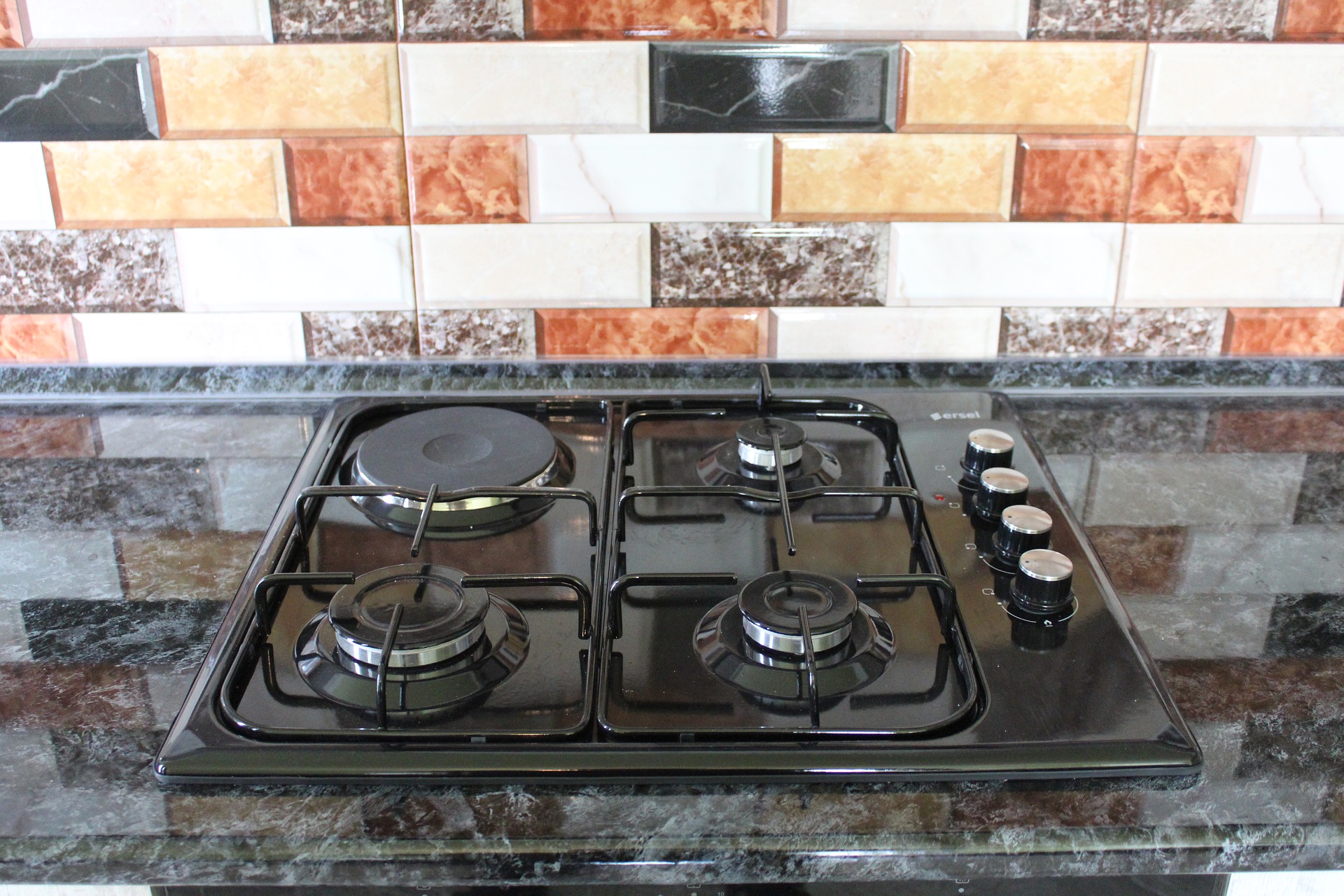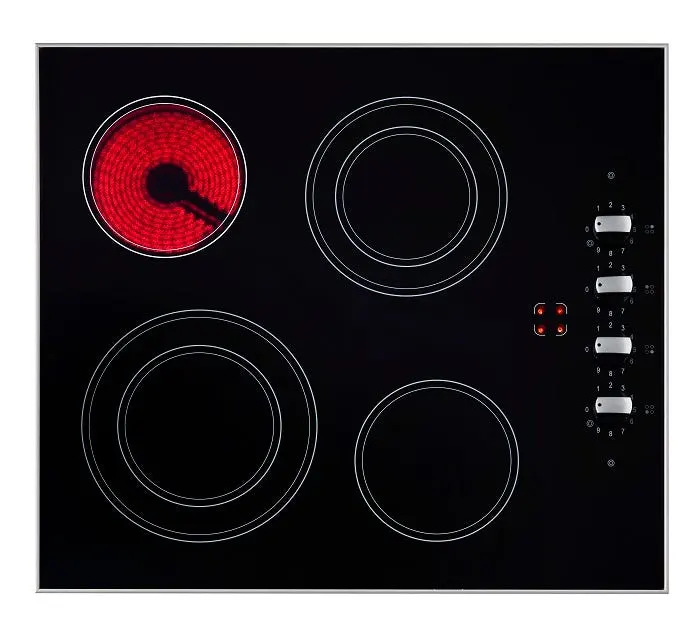Exploring the Various Types of Stove Tops
I. Gas Stove Tops: The Traditional Choice

A. Open Flame Burners: Embracing the Classic Cooking Experience
Gas stove tops offer a classic cooking experience with their open flame burners. The sight of a live flame igniting and heating the cookware creates a sense of nostalgia and connection to traditional cooking methods. The open flame allows for direct heat transfer, which can be advantageous for certain cooking techniques, such as charring vegetables or achieving a perfect sear on a steak. Gas burners also offer the benefit of instant heat, allowing for immediate temperature adjustments during cooking.
B. Adjustable Heat Control: Regulating Temperatures with Precision
Gas stove tops provide precise heat control, allowing for accurate temperature regulation. The burner knobs or dials offer incremental adjustments, allowing the cook to easily increase or decrease the heat levels according to the recipe’s requirements or personal preference. This level of control is particularly useful for delicate tasks like simmering sauces or melting chocolate, where precise temperature control is crucial to achieving the desired results.
II. Electric Coil Stove Tops: Affordable and Easy to Use

A. Reliable and Cost-Effective Heating: The Benefits of Electric Coils
Electric coil stove tops offer a reliable and cost-effective heating option. The electric coils generate heat by conducting electricity, providing even and consistent heat distribution across the coils. The design of electric coils makes them durable and capable of withstanding heavy cookware. The affordability of electric coil stove tops makes them a popular choice, particularly for budget-conscious homeowners or those looking for a simple and reliable cooking surface.
B. Basic Operation: Understanding the Simplicity of Electric Coil Stoves
Operating an electric coil stove top is straightforward and user-friendly. The heating coils are controlled by turning the knobs or dials, allowing for easy adjustment of heat levels. The simplicity of electric coil stoves makes them suitable for cooks of all skill levels, from beginners to experienced chefs. The coils also cool down relatively quickly after use, minimizing the risk of accidental burns or prolonged heat exposure.
III. Smooth Glass Electric Stove Tops: Sleek Design with Even Heating

A. Seamless and Stylish Appearance: Enhancing Your Kitchen Aesthetics
Smooth glass electric stove tops offer a sleek and modern design that enhances the aesthetics of any kitchen. The smooth and seamless glass surface creates a visually appealing focal point, adding a touch of elegance to the cooking area. The minimalistic design of glass tops complements contemporary kitchen styles and provides a visually pleasing contrast to other countertop materials.
B. Efficient Heat Distribution: Achieving Consistent Cooking Results
Smooth glass electric stove tops deliver efficient heat distribution, ensuring even cooking results. The flat surface of the glass allows for direct contact between the cookware and the heating element beneath, resulting in consistent heat transfer. The glass surface is designed to distribute the heat evenly across the pan’s bottom, eliminating hot spots and reducing the risk of uneven cooking or scorching. This consistent heat distribution allows for precise temperature control and reliable cooking performance.
IV. Induction Cooktops: Cutting-Edge Technology for Precision Cooking

A. Magnetic Induction Heating: Harnessing the Power of Electromagnetism
Induction cooktops utilize advanced technology, harnessing the power of electromagnetism to generate heat. Induction works by creating a magnetic field between the cooktop and the induction-compatible cookware. The cookware itself becomes the heat source, allowing for rapid and efficient heating. Induction cooktops offer fast heat-up times and precise temperature control, making them a favorite among professional chefs and passionate home cooks.
B. Rapid and Precise Temperature Control: Adjusting Heat Instantly
Induction cooktops offer rapid and precise temperature control, allowing for instant adjustments during cooking. The heat is generated directly in the cookware, resulting in immediate changes in temperature when the dial or touch control is adjusted. This level of control is beneficial for delicate tasks such as sautéing or simmering, where precise temperature adjustments are crucial. Induction cooktops also offer precise low-temperature options, making them ideal for tasks like melting chocolate or keeping sauces warm without the risk of scorching.
V. Dual-Fuel Ranges: The Best of Both Worlds

A. Gas Burners and Electric Ovens: Combining the Benefits of Gas and Electric
Dual-fuel ranges offer the best of both worlds by combining gas burners and electric ovens. Gas burners provide instant heat and precise temperature control, allowing for efficient and versatile stovetop cooking. On the other hand, electric ovens deliver consistent and even heat distribution, ensuring optimal baking and roasting results. Combining these two distinct heating methods allows cooks to take advantage of the benefits offered by both gas and electric appliances in a single cooking unit.
B. Versatile Cooking Options: Maximizing Cooking Capabilities
Dual-fuel ranges provide versatility in cooking options, making them a favorite among culinary enthusiasts. The gas burners offer precise control over heat levels, making them ideal for tasks such as searing, boiling, or sautéing. The electric ovens provide a stable and even cooking environment, enabling exceptional baking, roasting, and broiling. With a dual-fuel range, you can prepare a wide variety of dishes, from stovetop favorites to perfectly browned pastries, all in one appliance.
VI. Solid Fuel Cookers: Traditional Charm with Modern Cooking Techniques
A. Wood and Coal-Burning Options: Embracing Traditional Cooking Methods
Solid fuel cookers offer traditional charm by utilizing wood or coal as the fuel source. These cookers harken back to a time when stovetop cooking relied on burning natural materials for heat. Wood-burning cookers create a warm and cozy atmosphere, infusing food with a distinct smoky flavor. Coal-burning cookers offer a consistent and long-lasting heat source, ideal for slow cooking or simmering dishes. Solid fuel cookers are popular in rural areas or for individuals seeking a traditional cooking experience.
B. Multi-Fuel Possibilities: Adapting to Different Fuel Sources
Many solid fuel cookers are designed to be multi-fuel, meaning they can utilize various fuel sources such as wood, coal, or even pellets. This versatility allows for flexibility in fuel selection based on availability, personal preferences, or environmental considerations. Multi-fuel cookers often include features such as adjustable dampers or airflow controls, enabling users to optimize combustion and heat output based on the chosen fuel source. This adaptability makes them a practical choice for individuals seeking a solid fuel cooker that can accommodate different cooking needs and fuel availability.
Conclusion:
Understanding the different types of stove tops and their unique features provides invaluable insights when choosing the ideal cooking surface for your kitchen. From the classic appeal of gas burners to the cutting-edge technology of induction cooktops, each type offers distinct benefits and considerations. Dual-fuel ranges combine the convenience of gas burners with the even heat distribution of electric ovens, providing versatility in cooking options. Solid fuel cookers, whether wood or coal-burning, offer traditional charm and the opportunity to embrace age-old cooking techniques. By considering your cooking preferences, style, and budget, you can make an informed decision and select a stove top that elevates your cooking experience and meets your culinary needs.
